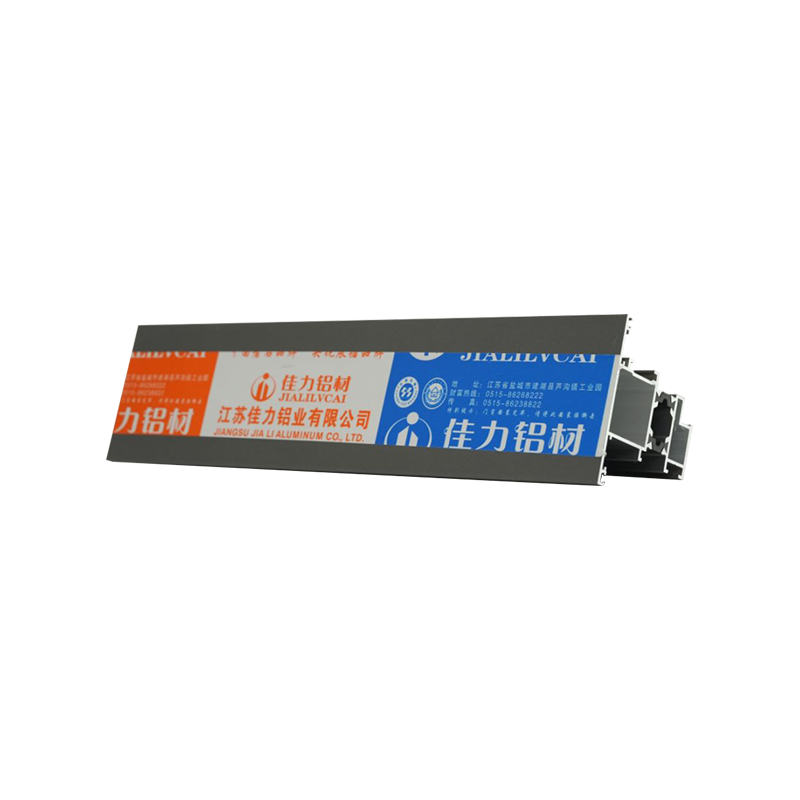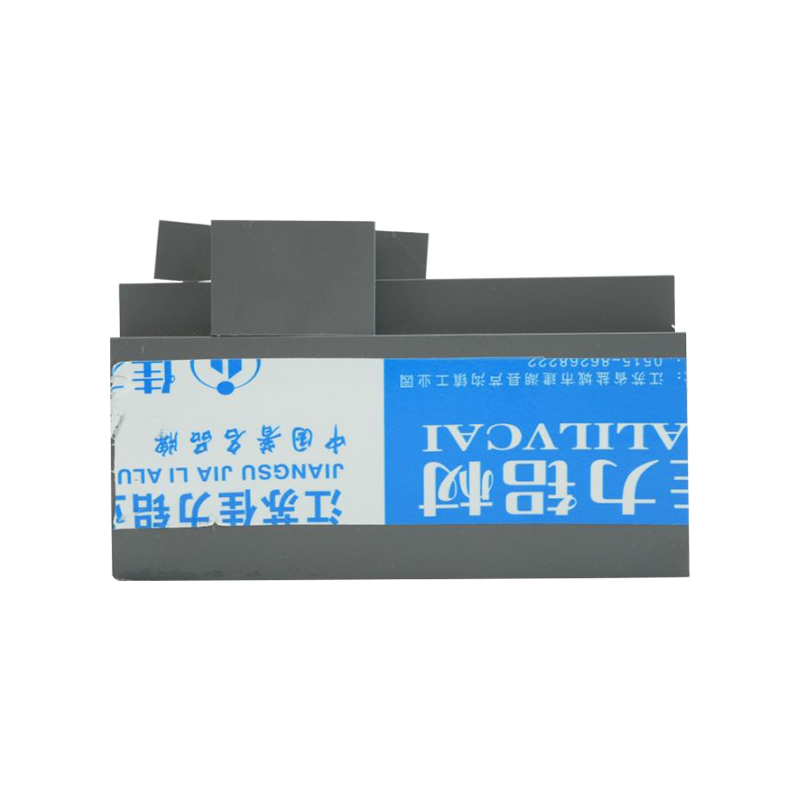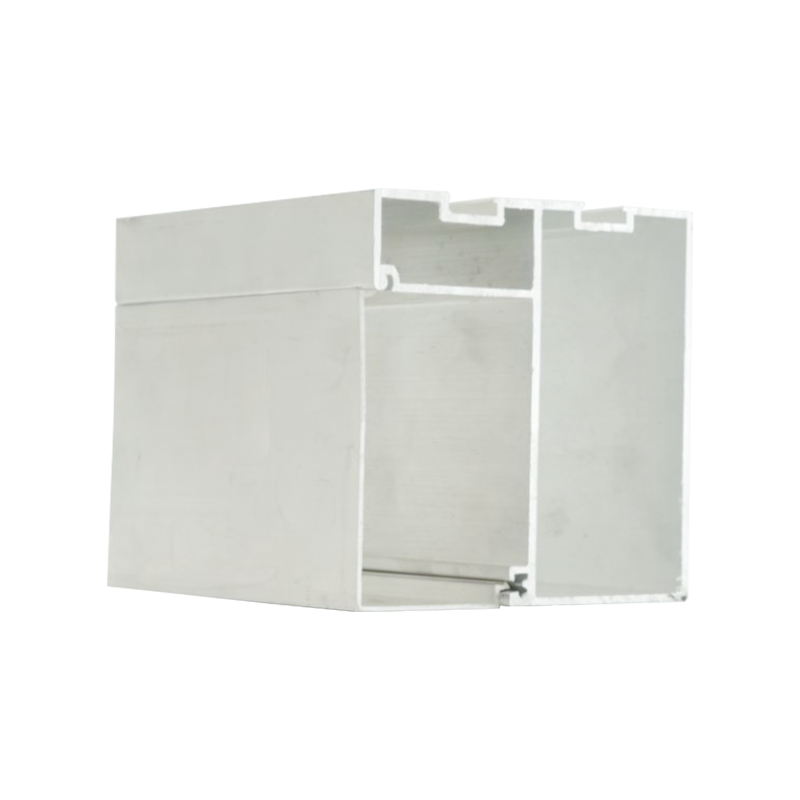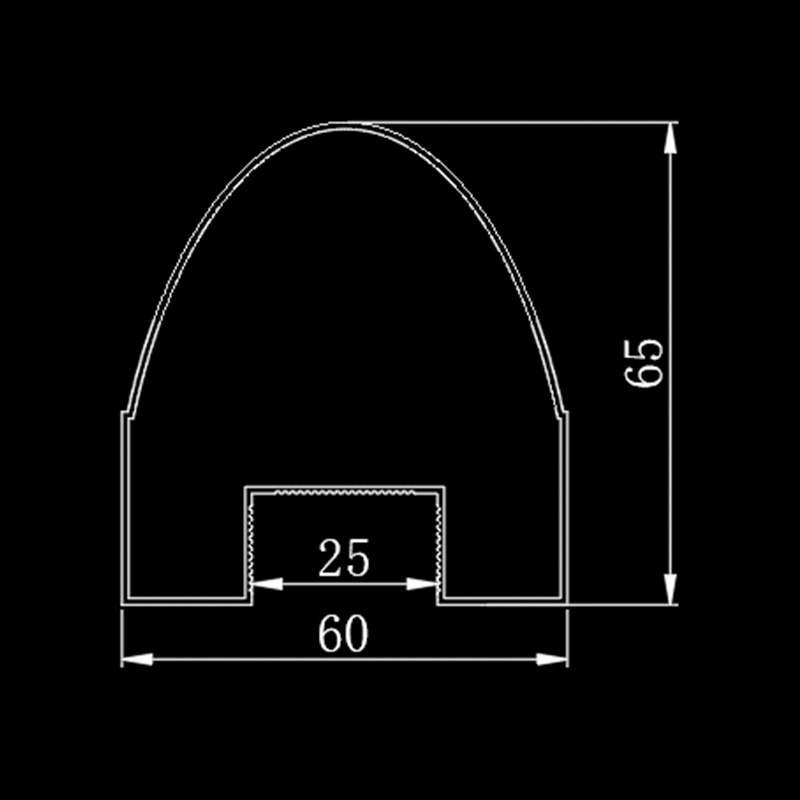The selection of window systems is a fundamental decision in architectural design and building construction, impacting aesthetics, performance, and functionality. Among the various options, two styles often stand out for their versatility and widespread use: tilt-and-turn and casement windows. While both can be manufactured using high-quality lightweight casement window architectural aluminum profile systems, their operational mechanisms and performance attributes diverge significantly. This divergence is not merely a matter of hardware but is fundamentally rooted in the design and engineering of the aluminum profiles themselves. Understanding the difference in profile design is critical for architects, builders, wholesalers, and buyers to make informed decisions that align with project requirements, building codes, and client expectations.
Foundational Concepts: Defining the Window Types and the Role of the Profile
Before delving into the differences, it is essential to establish a clear understanding of what each window type is and the critical role the aluminum profile plays. The aluminum window profile is the extruded aluminum skeleton that forms the core structure of the window unit. Its design determines the window’s strength, thermal performance, and compatibility with hardware.
A casement window is a window that is attached to its frame by one or more hinges, typically on the side. It opens outward, either to the left or right, much like a door, and is usually operated by a crank handle. The entire sash swings clear of the opening, providing excellent, unobstructed ventilation. The design philosophy of a casement window is centered on maximum ventilation and a clear opening for egress or views.
A tilt-and-turn window, on the other hand, is a multi-functional window that offers two distinct opening modes from a single sash. In the “tilt” mode, the top of the sash tilts inward, allowing for secure ventilation even in rain. In the “turn” mode, the entire sash swings inward on side-mounted hinges, similar to a casement but in the opposite direction, providing a full clear opening for cleaning and emergency egress. This dual functionality requires a more complex hardware system, which in turn demands a specific profile design to accommodate it.
The term lightweight casement window architectural aluminum profile generally refers to the extruded sections used in windows that open via hinges, with “lightweight” denoting an optimized design that uses material efficiently without sacrificing strength. While the name specifies “casement,” the principles of lightweight, structural aluminum extrusion are foundational to both window types discussed here. The key distinction lies in how these profiles are engineered to meet the unique demands of each window’s operation.
A Comparative Analysis of Key Profile Design Characteristics
The core differences between tilt-and-turn and casement window profiles can be broken down into several key characteristics. These include the structural demands placed on the frame and sash, the complexity of the rebate area, the integration of hardware, and the resulting performance metrics.
1. Structural Demands and Sash-Frame Interaction
The way a window sash moves dictates the structural requirements for its profiles.
In a casement window, the sash opens outward. This places specific stresses on the hinges and the frame. The weight of the sash is cantilevered off the frame, requiring the hinge side of the frame profile to be exceptionally robust to handle the moment load. The profiles, particularly on the hinge side, are often designed with reinforced chambers or may be of a thicker wall thickness to provide the necessary structural integrity. The locking mechanism is opposite the hinges, and when engaged, it pulls the sash tightly against the frame across the latch side and the head, creating a very effective seal. The aluminum window profile design for a casement is therefore optimized for a unidirectional, in-plane pull against the weather-stripping.
In a tilt-and-turn window, the profiles must accommodate two completely different modes of movement, each with its own structural paradigm. In the “turn” (in-swinging) mode, the load is different from an out-swinging casement; the weight is borne by the hinges as the sash swings inward, but the risk of sagging is managed by high-performance hardware. In the “tilt” mode, the sash is essentially pivoting from bottom-mounted hardware. This requires the sash profile to be strong enough to resist torsion and maintain its square shape when only supported at two points at the bottom. The frame profile must be designed to receive the sash securely in both the fully closed position and the tilted position, with different sets of weather-stripping and seals often coming into play in each mode. This multi-functional requirement inherently leads to a more complex and often heavier profile construction compared to a standard casement.
2. Rebate and Glazing Bead Design Complexity
The rebate is the part of the sash profile that holds the insulating glass unit (IGU). Its design is crucial for weatherproofing, security, and aesthetics.
A casement window profile typically features a relatively straightforward rebate. The glazing bead, which holds the glass in place, is usually external. On out-swinging casements, this bead is on the outside of the building. This allows for easy installation and replacement of the glass from the interior, as the sash remains inside. The weather-stripping is arranged around the perimeter of the sash or frame, creating a continuous seal when the window is closed and locked.
A tilt-and-turn window profile has a more complex rebate and sealing arrangement. Because the sash swings inward, the glazing bead is almost always located on the interior side. This is a critical feature for security and practicality. Furthermore, the rebate area must be engineered to work with the multi-point locking system. The locking pins, or “espagnolettes,” must engage with keepers on the frame in the closed position, disengage for tilting, and then fully retract for turning. The profile must have integrated channels or grooves to house this complex locking mechanism. The path of the locking bolt as it travels from the turn-only position to the tilt-and-turn position must be perfectly guided by the profile’s geometry. This level of integration between the hardware system and the aluminum profile design is a hallmark of tilt-and-turn windows and is a significant point of differentiation.
3. Hardware Integration and Channel Systems
The hardware is the engine of the window, and the profiles provide the chassis. The level of integration is a key differentiator.
Casement window hardware is comparatively simple. It consists of hinges and a single operating mechanism (usually a crank handle) that operates a locking arm or a series of cams. The profiles need to have a channel to house the locking arm and locations to mount the hinges and the handle. The requirements for the aluminum profile are straightforward: provide a secure mounting point and a clear path for the lock arm to travel.
Tilt-and-turn hardware is inherently more complex. A single handle controls a sophisticated multi-point locking system that must perform different functions based on the handle’s position. The hardware must manage the transition between closed, tilted, and fully open (turn) positions. This requires a system of rods, gears, and corner transmitters housed within the sash profile. Consequently, the sash profiles for tilt-and-turn windows must have dedicated, precisely sized internal chambers to accommodate these components. The frame profiles also require integrated channels or reinforcements to receive the various locking points. This intricate relationship means that the hardware and profiles are often co-engineered as a single system. The selection of a lightweight casement window architectural aluminum profile for a standard project is often more flexible, whereas tilt-and-turn profiles are usually part of a proprietary or highly specialized system.
4. Performance Implications: Weatherproofing, Ventilation, and Acoustics
The design differences in the profiles directly translate to differences in performance.
Weatherproofing and Air Infiltration: Both systems can achieve high levels of weatherproofing when designed and manufactured correctly. The casement window’s action of pulling the sash tightly against the frame creates an excellent seal, often resulting in very low air infiltration rates. The tilt-and-turn window, with its multi-point locking system, also compresses the seals evenly around the entire perimeter, achieving similarly high performance. The key difference is that the tilt-and-turn’s more complex seal arrangement, which must be effective in both closed and tilted positions, can be more susceptible to performance issues if the hardware becomes misaligned or the profiles are not fabricated with high precision.
Ventilation Control: This is a primary functional differentiator. The casement window offers excellent, full-sash ventilation but provides little control during inclement weather. The tilt-and-turn window excels in this area. The tilt mode allows for a minimal, secure ventilation gap at the top, which is ideal for rainy days, promoting energy efficiency by allowing stale, warm air to escape without creating a draft or letting in rain. This makes the tilt-and-turn system highly suited for climates with variable weather and for multi-story buildings where safe, all-weather ventilation is a priority.
Acoustic Insulation: The acoustic performance of a window is largely determined by the glass package and the quality of the seal. Both window types can be designed for high acoustic insulation. However, the tilt-and-turn window’s ability to provide ventilation in the minimally open tilt position can be advantageous in noisy environments, as it allows for air exchange without the larger opening that would admit significant sound.
The table below provides a consolidated overview of the key design and performance differences.
| Feature | Casement Window Profiles | Tilt-and-Turn Window Profiles |
|---|---|---|
| Primary Operation | Out-swinging (typically) | In-swinging tilt and in-swinging turn |
| Structural Focus | Reinforced hinge side to handle cantilevered load. | Robust sash to resist torsion in tilt mode; frame to support multi-directional loads. |
| Hardware Complexity | Moderate. Single set of hinges and a locking mechanism. | High. Sophisticated multi-point locking system controlled by a single handle for dual functions. |
| Glazing Bead Location | Typically on the exterior face. | Typically on the interior face for security and ease of glazing. |
| Ventilation Modes | Single mode: full, unobstructed opening. | Dual mode: secure micro-ventilation (tilt) and full opening (turn). |
| Ideal Application | Maximum ventilation, clear views, straightforward operation. | Versatile ventilation control, enhanced security, easy interior cleaning, modern multi-story buildings. |
| Ease of Fabrication | Generally simpler to fabricate and assemble. | Requires higher precision in fabrication to ensure proper alignment of complex hardware. |
Selecting the Right System: A Guide for Industry Professionals
For wholesalers and buyers, the choice between systems that use a standard lightweight casement window architectural aluminum profile and those requiring a specialized tilt-and-turn profile is not about one being universally better than the other. It is about matching the product’s inherent strengths to the project’s specific needs.
When to Prioritize Casement Window Systems:
Casement windows are an excellent choice when the primary requirements are maximum ventilation, simplicity of design, and cost-effectiveness. They are ideal for residential projects, ground-floor applications, and buildings where a traditional or straightforward operational logic is preferred. The profiles are widely available, and the hardware is familiar to most installers. From a wholesaler’s perspective, stocking casement window profiles offers broad market applicability and often a simpler inventory, as the profiles are less specialized. For projects where the key buyer search terms might be “high-performance outward opening windows” or “crank-operated window systems,” the casement system is the direct answer.
When to Prioritize Tilt-and-Turn Window Systems:
Tilt-and-turn windows should be specified when versatility, controlled ventilation, and enhanced security are paramount. They are particularly well-suited for high-rise buildings, as the inward tilt mode allows for safe ventilation. The inward swing also makes cleaning the exterior glass from the inside a simple task. Their modern European aesthetic and multi-functionality are significant selling points in high-specification residential and commercial projects. For a building materials buyer, understanding that this system answers search terms like “multi-function inward opening windows,” “safe ventilation for high-rises,” or “German-style window systems” is key. However, it is crucial to recognize that this performance comes with increased complexity in both the profile design and the associated hardware, which can impact the initial project budget and require more specialized knowledge for installation and maintenance.

 ENG
ENG
 English
English русский
русский 中文简体
中文简体 Español
Español bahasa Indonesia
bahasa Indonesia






